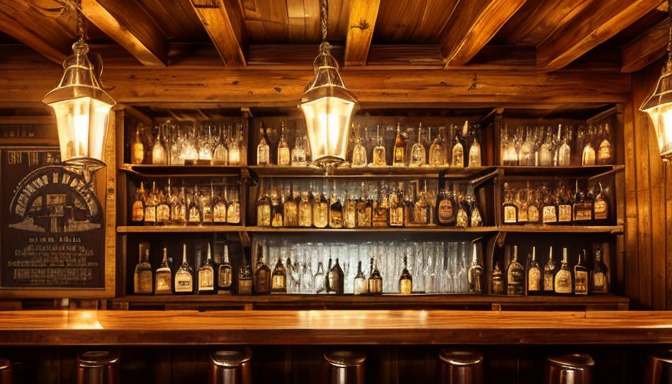The Wild West has always held a fascination for audiences, serving as a backdrop for tales of adventure, conflict, and the relentless pursuit of freedom. Through the lens of cinema, we can explore the rugged landscapes and complex characters that have shaped American storytelling. From the dusty trails to the saloons filled with gun-slinging heroes and ruthless outlaws, Western films have painted a vivid picture of life on the frontier.
These films have not only entertained but also reflected the cultural values and societal changes of their times. Early Westerns, like “Stagecoach” (1939), introduced audiences to the archetype of the lone hero, while later classics such as “The Good, the Bad and the Ugly” (1966) challenged traditional narratives, showcasing a more nuanced view of morality and justice. The evolution of the genre mirrors the shifting landscapes of American identity, capturing the essence of a nation grappling with its past and future.
As we delve deeper into this cinematic journey, we’ll uncover how these films have influenced not only the genre itself but also the broader fabric of American culture. They have become a cultural touchstone, inviting us to reflect on themes of heroism, lawlessness, and the relentless quest for personal freedom. So, grab your popcorn and saddle up as we explore the iconic films that have defined the Wild West, leaving an indelible mark on the world of cinema.
The Evolution of the Western Genre
The Western genre has undergone a fascinating transformation since its inception, mirroring the very spirit of America itself. Initially, Westerns were all about the rugged frontier, showcasing the clash between civilization and the untamed wilderness. Think of classic films like “Stagecoach” (1939) and “High Noon” (1952), which set the stage for what we now recognize as quintessential Westerns. These films captivated audiences with their tales of heroism, lawlessness, and the relentless pursuit of justice.
As society evolved, so did the themes explored in Western films. The 1960s and 70s brought a wave of revisionist Westerns, challenging the glorified portrayals of cowboys and Indians. Movies like “The Good, the Bad and the Ugly” (1966) and “Little Big Man” (1970) began to question the morality of their characters and the very myth of the West. This shift reflected a growing disillusionment with traditional values, as filmmakers sought to present a more nuanced view of American history.
Today, the Western genre continues to evolve, blending with other genres and embracing diverse storytelling. Films like “Django Unchained” (2012) and “The Hateful Eight” (2015) showcase how modern filmmakers are reinterpreting the Western narrative, incorporating elements of social commentary and cultural diversity. The genre remains a powerful lens through which we can explore the complexities of the human experience, making it as relevant today as it was over a century ago.

Iconic Characters and Their Impact
When we think of the Western genre, certain iconic characters immediately come to mind. These figures are not just characters; they are the embodiment of the American spirit, representing themes of heroism, lawlessness, and the eternal struggle between good and evil. Take, for instance, the legendary Clint Eastwood as the Man with No Name. His stoic demeanor and unyielding moral compass have set the standard for what it means to be a Western hero. But why do these characters resonate so deeply with us?
One reason is their complexity. They often grapple with internal conflicts that mirror the challenges faced by society. For example, the character of Shane, portrayed by Alan Ladd, is a classic tale of a gunslinger trying to escape his violent past while protecting a family. This duality makes them relatable, as we all face our own battles between right and wrong.
Moreover, these characters often reflect the cultural values of their time. As society has evolved, so too have the characters we see on screen. The shift from the traditional, rugged cowboy to more nuanced portrayals, such as those in films like Unforgiven or No Country for Old Men, illustrates changing perceptions of morality and justice. This evolution not only shapes the genre but also influences how we perceive the American frontier itself.
In conclusion, the iconic characters of Western films are more than just figures on a screen; they are symbols of the American narrative, reflecting our values, struggles, and triumphs. As we continue to explore this genre, we uncover not just stories of the Wild West, but also the very essence of what it means to be human.
Frequently Asked Questions
- What defines a Western film?
A Western film typically features the American Old West setting, often highlighting themes of lawlessness, heroism, and morality. These films usually include iconic characters like cowboys, outlaws, and lawmen, portraying the struggle between good and evil.
- How has the Western genre evolved over time?
The Western genre has transformed significantly from the early 1900s to today. Initially focused on clear-cut heroism, modern Westerns often explore complex characters and moral ambiguities, reflecting societal changes and audience expectations.
- Who are some iconic characters in Western films?
Characters like Clint Eastwood’s “Man with No Name” and John Wayne’s “The Duke” have become symbols of the genre. These characters often embody rugged individualism, facing moral dilemmas while navigating the lawless landscape of the Wild West.
- What impact did Western films have on society?
Western films have shaped cultural perceptions of the American frontier, influencing everything from fashion to folklore. They’ve often romanticized the Wild West, creating a lasting legacy that continues to inspire filmmakers and audiences alike.